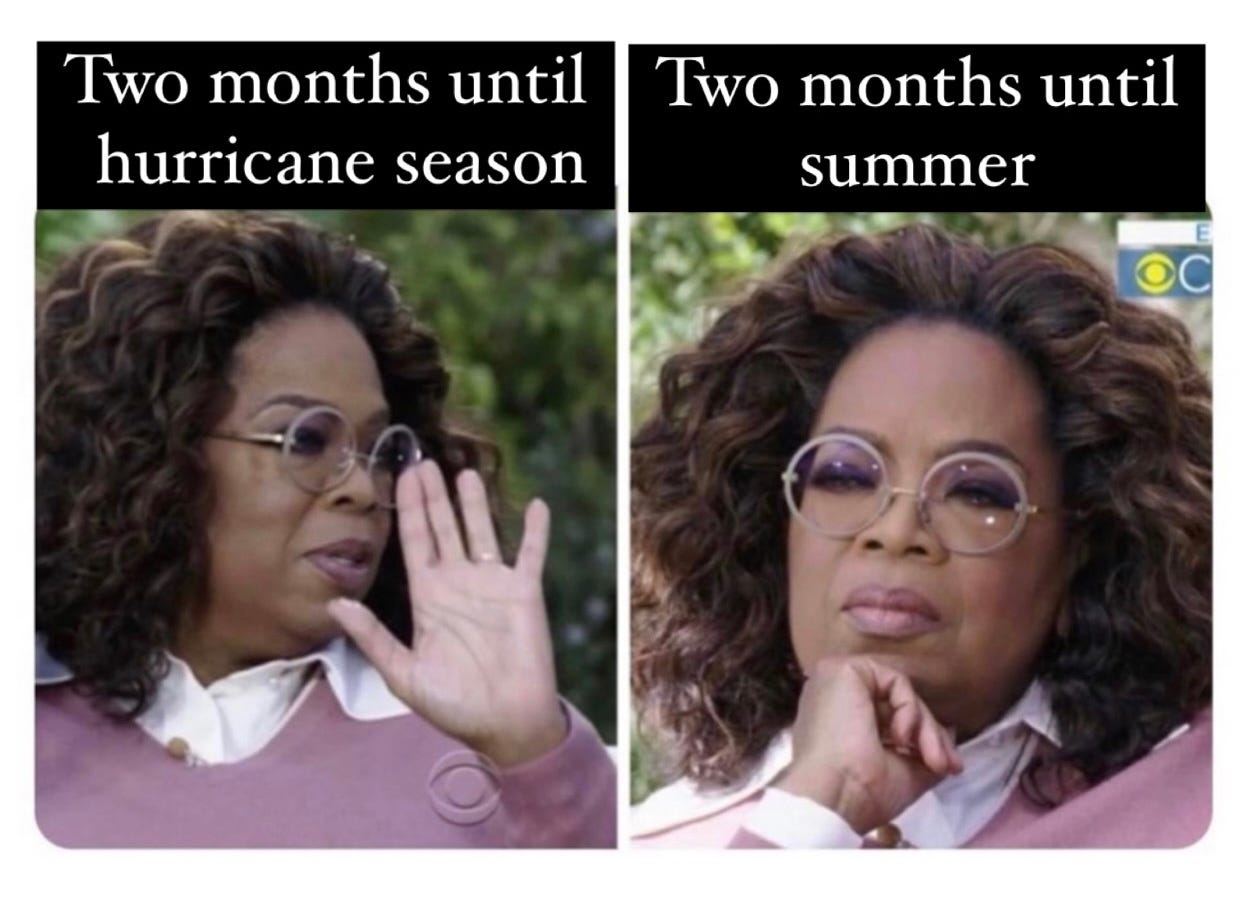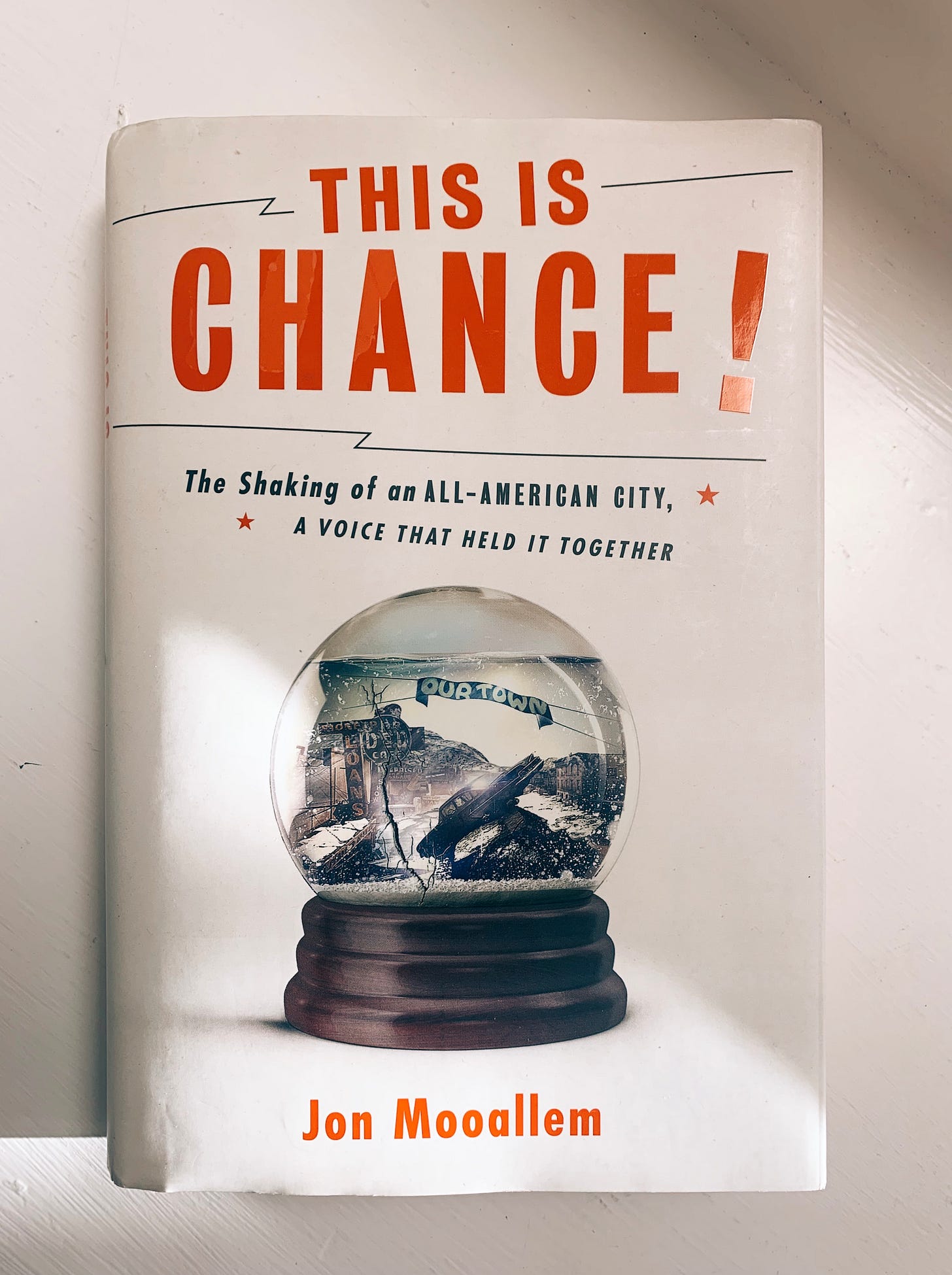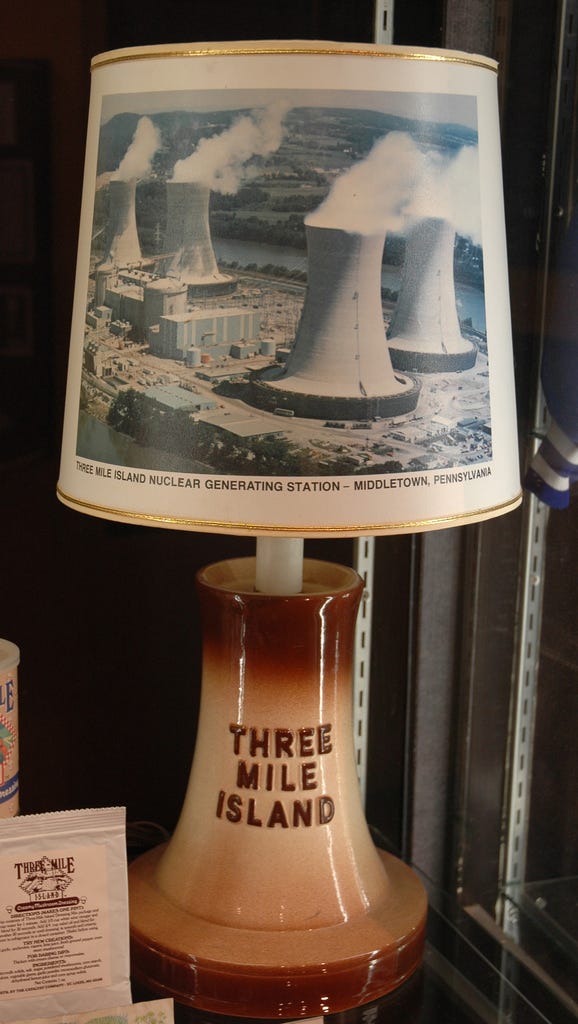Disasterology: March 2021
This newsletter is a compilation of recent disaster ~things~ that I think are cool, important, or otherwise of interest to people who are intrigued with disaster (broadly defined).
There’s a little something for everyone!
Hello Friends!
Spring is here! People are starting to receive the vaccine! We finally got a confirmation hearing for Deanne Criswell! Not to jinx it but things are looking up!
The State of Emergency Management
The state of emergency management is digging a giant ship out of a canal with a single excavator.
This month is notable for the diversity of hazards emergency managers have had to manage.
Picking up where we left off last month the death toll in Texas has risen to at least 111. Residents in Jackson, Mississippi were without clean water for over a month. The southeast has been on high alert as several tornadoes have caused significant damage. Most recently there has been serious flooding in Tennessee.
Gun violence did not stop this past year but the need for gun control was brought back into the news this month as eight people were killed, including six Asian American women, in the Atlanta-area, and then just days later ten people were killed in a Colorado grocery store.
Migrants crossing the Mexico-US border also never stopped in the past year, but it has been back in the news as DHS directed FEMA to help with the response (similar to 2014).
This month was the one-year anniversary of the day most Americans seemed to realize COVID was a big problem. Buzzfeed has an oral history of March 11, 2020. As Dr. Birx finally admitted (what we all already knew) that the Trump administration’s decisions led to hundreds of thousands of deaths, the CDC director reminded everyone yesterday that COVID is not over. She gave a stark warning about concerns of an impending fourth wave.
Elsewhere in the world, there has been extensive flooding in Australia. New Zealand got shook up. A fire barreled through a Rohingya refugee camp. A (gorgeous) volcano is erupting in Iceland. And, of course, Egypt has been busy getting the ship unstuck. Ryan Hagen has a great piece looking at how “the stuck boat is indicative of 21st-century disasters.
Also, ‘space hurricane’.
The State of FEMA
There’s lots of FEMA-related news this month!
Starting in April FEMA will finally begin utilizing the Funeral Assistance program. This will allow family members of COVID victims to be reimbursed for some funeral-related expenses. It is absolutely unconscionable that this took a year to launch but at least it’s happening now. Please spread the word!! So far the program has not garnered much media coverage and I suspect many people will be unaware that this option will soon be available to them.
FEMA employees seem to be excited (relieved?) that they can say the words “climate change” again without fear of repercussion. In fact, acting administrator Bob Felton included a statement linking climate change to increasing disasters in written congressional testimony this month. The bar is on the floor but hopefully, this signals that FEMA will take greater ownership over climate change moving forward.
The Congressional hearing was actually about the “The Role of FEMA and Emergency Management in COVID-19 Response”. In addition to Fenton, there was a great list of witnesses featuring state and local emergency managers and is worth watching in full.
There were a few commonalities among witnesses regarding their key take-aways from emergency management’s COVID response: coordination and relationships are important, local/state emergency managers need more capacity to deal with evolving threats, there is a need for consistent communication across levels of government, other agencies (specifically HHS) do not have a good enough understanding of ICS/NIMS, federal funding needs to be expedited, the Stafford Act needs to be broadened/ reassessed, there is a need to re-evaluate domestic production capabilities, and there is a continuing need to invest more in preparedness/ mitigation.
Another common refrain at the hearing was the need to address disproportionate impacts among communities of color and people with disabilities. Equity must guide the work emergency management does generally, and the work FEMA does specifically. There is a persistent and growing need to center marginalized and frontline communities in FEMA’s work across the country. Virginia’s State Coordinator of Emergency Management Curtis Brown went into this issue in his written testimony. There does seem to be a growing understanding within FEMA of the importance of having equity drive their work. How exactly changes may manifest is still unclear. Keep the pressure on!
Finally – the moment we’ve been waiting for – Deanne Criswell’s Confirmation Hearing was held last week!! This was exciting for me personally because it meant I got to do one of my favorite things – live-tweet CSPAN.
I would love to just link you a whole bunch of articles analyzing her responses but there were only TWO articles written about the hearing. Yes, you read my cap locks correctly TWO freakin’ articles about the next FEMA administrator. Wtf?!
This one in Homeland Security Today does give a good summary. This one from the New York Post is not wrong but isn’t super helpful.
So, I guess you’re stuck with my analysis.
The hearing covered substantial ground but did not get into any details. Time was spent reviewing Criswell’s background in emergency management – which is extensive.
Criswell emphasized the need for taking a comprehensive approach to emergency management, reiterated that a “one size fits all” approach does work when impacts are unequal, and confirmed climate change needs to be integrated into FEMA’s work.
As interested as I was in Criswell’s answers, I was almost more intrigued by the Senator’s questions. Democratic senators repeatedly brought up concerns about climate change. Republican senators had a lot of questions about FEMA’s presence at the border. There was a somewhat surprising emphasis from them on the need for mitigation. They had a lot of questions about COVID-related reimbursement and FEMA’s continued role in vaccine distribution. There were more questions than you might expect about the Nonprofit Security Grant Program and only a single mention of the National Flood Insurance Program. Many of the senators also took the hearing as an opportunity to advocate for various issues related to disaster survivors in their states.
Another observation is that the Senate seems to be extremely confused about the Stafford Act. I do not know why they are confused or how this happened, but someone needs to explain to them the difference between a ‘hazard’ and a ‘disaster’. Rick Scott also said some confusing things about Florida, but I don’t think it was that important and for the sake of my own sanity I’m letting it slide.
In patriarchy-related news, I only caught one condescending comment directed at Criswell. Senator Lankford said, “I want to make you aware that if you’re an emergency manager…”. I didn’t hear the rest because my head spun around exorcist-style. The suggestion that Criswell, who has been an emergency manager for two decades, needs a senator to make her “aware” of anything that emergency managers experience is… whew!
Criswell was extremely strategic in her responses. She took the smart approach of not answering any questions that she was not asked. I was personally disappointed because, of course, I would like to get into the details of all these issues. Theoretically, it would be useful if Congress did too. I also didn’t expect them to do more than just usher her through and that’s what they did. So, from the perspective of “we need a senate confirmed FEMA administrator”, the hearing went great.
Of note: the disaster bingo card filled up real quick for a 45-minute hearing. We got natural disaster, resilience, $1 to $6, begin and end locally, whole community, and the senator from California came through with ‘the Big One’.
~MEME~ Break:
The Book of the Month:
“This is Chance! The Shaking of an All-American City, A Voice That Held It Together” by Jon Mooallem
Very few writers get disaster response right, Jon Mooallem is one of them.
I’ve been pelted by recommendations to read This is Chance! and y’all weren’t joking. Let me put this in terms you’ll understand – it easily surpasses Isaac’s Storm. Yeah, I said it.
The book follows the experience of Genie Chance, a local radio reporter who finds herself at the center of the 1964 Alaska earthquake. I cannot think of another book that so clearly depicts how reporters are an active part of disaster response. At a time when there’s something akin to hostility towards emergence and improvisation in disaster response, this story illustrates not only its value but its beauty. Mooallem also brings in two of our favorite disaster researchers – Dr. Quarantelli and Dr. Anderson, who flew to Alaska to do one of the first Quick Response Studies. The list of popular disaster books that center women are few so on that point alone this is a worthy read.
The Disasterology Monthly Newsletter gives this 10/10 stars.
You can read more here and buy it here.
Important Disaster-Related Media Coverage This Month:
An absolute fire article from Alex Vezina in the Toronto Sun about the role of emergency management during the response to a pandemic.
Response
Boston Globe: Massachusetts spent 20 years refining its own mass vaccination plan. Then it looked elsewhere
Baltimore Sun: I wanna shot: How life on the road with Twisted Sister prepared the man running Baltimore County’s COVID vaccine sites
ProPublica: How Inequality Gets Built Into America’s Vaccination System
KYUK: Alaska Disaster Law is Vague. Here’s How That Left One Community Scrambling For Help.
Mitigation
New York Times: Tiny Town, Big Decision: What Are We Willing to Pay to Fight the Rising Sea?
New York Times: Miami Says It Can Adapt to Rising Seas. Not Everyone is Convinced.
The San Diego Union-Tribune: AG Becerra joins lawsuits against San Diego housing projects, citing wildfire risks
The San Diego Union-Tribune: Sacramento leans into sea level rise
ProPublica: Hawaii’s Beaches Are Disappearing
The Advocate: Huge Louisiana coastal project receives positive report from the Corps of Engineers
HuffPost: After Championing Greener Building Codes, Local Governments Lose Right To Vote
Heated: ‘I don’t feel safe here’
Recovery
Vox: Migrants are heading north because Central America never recovered from last year’s hurricanes
New York Times: A Village Erased
La Brega: Vieques and the Promise To Build Back Better
Preparedness
Roll Call: Emergency preparedness training is optional for lawmakers, staff, but some look for a mandate
The Guardian: Stranding of Ever Given in Suez canal was foreseen by many
The Washington Post: We’re underestimating the destructive power of tornadoes, study shows
Los Angeles Times: Where would a major tsunami strike? Malibu, Venice and Long Beach, get ready
Houston Chronicle: Hurricane Laura exposes gaps in Galveston’s evacuation plan for low-income residents, report says
Atmos: In NoLa, a resilience Corps for Tomorrow’s Disasters
Grist: Biden wants to build a jobs corps to save the planet. California’s already doing it.
Weird Disaster Thing
This week I learned that there is a Three Mile Island commemorative lamp. Reader, I screamed!
I have 1000 questions starting with: Who made this? Why did they make this? Which came first, the base of the lamp or the lampshade? Where can I buy one?
The End Bits:
I would love it if you’d forward this to your friends, post on social media, and undertake any other form of newsletter sharing you deem appropriate. They can sign-up here.
In case you signed up for this newsletter without knowing who I am (a bold choice!) you can read more about me on my blog, listen to this episode of Ologies, or follow me on Twitter and Instagram where I impulsively narrate my every thought.
The logo was made by my friend Gabi. You can check out her Instagram and hire her for all of your badass art related needs.
Finally, this newsletter is ~FREE~. I plan on keeping it that way because eliminating barriers to disaster knowledge is important. However, several people expressed an interest in financially supporting this work. I’ve created a “paid subscriber” option for $5 a month or whatever you’d like to give. The only difference between a free sign-up and a paid subscriber option is that you’ll be able to see the full archives of the newsletters. Really, this is just a way for those who want (and can) to support the newsletter. I’ll use the money to cover administrative expenses, do things like buy books to review, and maybe one day hire a research assistant to help. Thank you to everyone who has already supported financially!!






